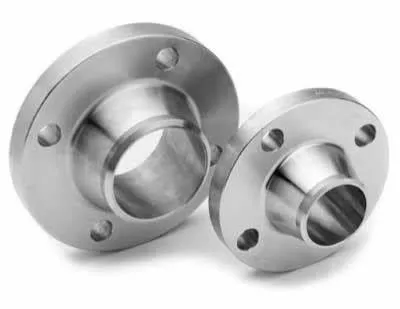-
Cangzhou Yulong Steel Co., Ltd.
-
Phone:
+86 13303177267 -
Email:
admin@ylsteelfittings.com
- English
- Arabic
- Italian
- Spanish
- Portuguese
- German
- kazakh
- Persian
- Greek
- French
- Russian
- Polish
- Thai
- Indonesian
- Vietnamese
- Zulu
- Korean
- Uzbek
- Hindi
- Serbian
- Malay
- Ukrainian
- Gujarati
- Haitian Creole
- hausa
- hawaiian
- Hebrew
- Miao
- Hungarian
- Icelandic
- igbo
- irish
- Japanese
- Javanese
- Kannada
- Khmer
- Rwandese
- Afrikaans
- Albanian
- Amharic
- Armenian
- Azerbaijani
- Basque
- Belarusian
- Bengali
- Bosnian
- Bulgarian
- Catalan
- Cebuano
- China
- China (Taiwan)
- Corsican
- Croatian
- Czech
- Danish
- Esperanto
- Estonian
- Finnish
- Frisian
- Galician
- Georgian
- Kurdish
- Kyrgyz
- Lao
- Latin
- Latvian
- Lithuanian
- Luxembourgish
- Macedonian
- Malgashi
- Malayalam
- Maltese
- Maori
- Marathi
- Mongolian
- Myanmar
- Nepali
- Norwegian
- Norwegian
- Occitan
- Pashto
- Dutch
- Punjabi
- Romanian
- Samoan
- Scottish Gaelic
- Sesotho
- Shona
- Sindhi
- Sinhala
- Slovak
- Slovenian
- Somali
- Sundanese
- Swahili
- Swedish
- Tagalog
- Tajik
- Tamil
- Tatar
- Telugu
- Turkish
- Turkmen
- Urdu
- Uighur
- Welsh
- Bantu
- Yiddish
- Yoruba

Oct . 05, 2024 10:42 Back to list
Specification for EN 1092-1 PN16 Flanges and Their Applications in Engineering
EN 1092-1 PN16 Flanges An Overview
Flanges are integral components in various piping systems, used to connect pipes, valves, pumps, and other equipment. Among the many standards that govern flange specifications, the EN 1092-1 PN16 standard is particularly significant in Europe and many other regions. This article explores EN 1092-1 PN16 flanges, their features, applications, and advantages.
Understanding EN 1092-1
EN 1092-1 is a European standard that provides specifications for flange design and manufacturing. It encompasses various types of flanges, with PN standing for Pressure Nominal, which indicates the maximum allowable pressure for the flange at a specified temperature. The PN16 designation means that this flange type is rated for a maximum pressure of 16 bar (approximately 232 psi) at room temperature. This makes EN 1092-1 PN16 flanges suitable for a variety of applications in fluid and gas systems.
Key Features
1. Material EN 1092-1 PN16 flanges can be manufactured from various materials, including carbon steel, stainless steel, and alloy steel. The choice of material often depends on the specific application, as it influences the flange's properties such as strength, corrosion resistance, and temperature tolerance.
2. Design Typically, these flanges are designed with a flat or raised face, which can affect how they are connected to other components. The flat-face design allows for a better seal on a smooth surface, while raised faces provide a more robust joint when connecting to a similar type of flange.
3. Dimensions EN 1092-1 PN16 flanges come in a variety of sizes to accommodate different pipe diameters. The standard outlines specific dimensions that manufacturers must adhere to, ensuring interoperability among different systems.
en1092 1 pn16

Applications
EN 1092-1 PN16 flanges are widely used in various industries, including
- Water Treatment In water supply systems, these flanges help connect pipes and equipment efficiently and safely. - Oil and Gas They are commonly found in pipelines transporting oil, natural gas, and other hydrocarbons due to their pressure rating and reliability. - Chemical Processing In chemical plants, these flanges are crucial for connecting pipes that handle various substances under pressure.
Advantages
1. Reliability The standardization provided by EN 1092-1 ensures consistent quality and performance, leading to enhanced reliability in applications. 2. Ease of Installation The design of PN16 flanges allows for easy alignment and installation, reducing downtime and labor costs during assembly.
3. Versatility With various material options and dimensions, EN 1092-1 PN16 flanges can be adapted to numerous applications, making them a versatile choice for engineers.
Conclusion
In summary, EN 1092-1 PN16 flanges play a crucial role in modern piping systems, offering safety and reliability in the transportation of fluids and gases. Their standardized design and adaptable features make them suitable for a wide array of industrial applications, reinforcing their importance in engineering and manufacturing standards. Understanding their specifications helps engineers select the appropriate flange for their specific needs, ensuring the efficiency and longevity of piping systems.
Latest news
-
ANSI 150P SS304 SO FLANGE
NewsFeb.14,2025
-
ASTM A333GR6 STEEL PIPE
NewsJan.20,2025
-
ANSI B16.5 WELDING NECK FLANGE
NewsJan.15,2026
-
ANSI B16.5 SLIP-ON FLANGE
NewsApr.19,2024
-
SABS 1123 FLANGE
NewsJan.15,2025
-
DIN86044 PLATE FLANGE
NewsApr.19,2024
-
DIN2527 BLIND FLANGE
NewsApr.12,2024
-
JIS B2311 Butt-Welding Fittings LR/SR 45°/90° /180°Seamless/Weld
NewsApr.23,2024











